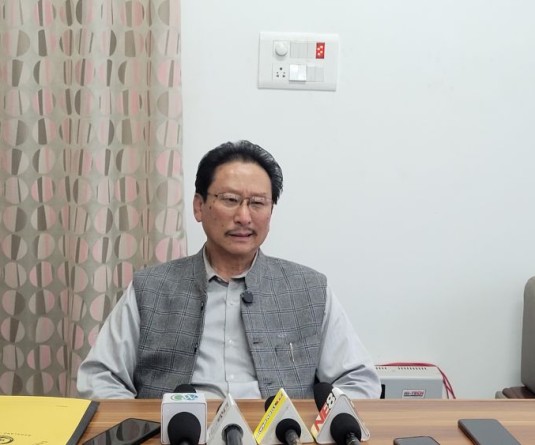Since its establishment in 2017, Zapami Heritage Museum has been attracting a large number of the visitors. (Morung Photo by Chizokho Vero)
Our Correspondent
Kohima | January 4
Since its establishment in 2017, Zapami Heritage Museum has been attracting a large number of the visitors.
Zapami village is under Pfutsero Sub Division of Phek district.
The unique historical experiences of the village had produced rich cultural heritage, according to Documentary Committee of Zapami Heritage Museum. The committee is headed by Kedoutsolhi Wetsah as convenor with six other members – Tekulo Kreo, Wepekhro Wetsah, Kelhikha Kenye, Lhiwepe Khutsoh,Riku Khutso and Zewekha Wetsah.
Keeping this in mind, the idea of collecting antiques from individual houses and depositing it at a museum for preservation, documentation and exhibition has been conceptualized for perpetual reference.
The need has been felt considering the perishable nature of most of these materials.
Sadly, the lack of general awareness about the value of these antiques has been a huge toll on the rich historical resources over the decades. Looking at some collections, it has been evident that some of these items had undergone the wear and the tear of time and environment.
The antiques range from ancient, probably hundreds if not few thousand years to more recent times like that of the World War II remains.
The items include fetish stone, weapons and shields of ancient warfare, instruments of war and friendship treaties in the form of spears and bible, agricultural implements, indigenous systems and technologies of cotton processing weaving tools, potteries of different sizes and utilities, clay jar, metal vessels, system of dry storages like that of preserving grains and seeds, wooden rice bear vats, varied kinds of cups, plates, bowls, system of weights and measures, bamboo baskets and mats for different purposes, women closets known as lüna-labu and bamboo combs, musical instruments and importantly remnants of World War II.
The collection of these antiques takes us to the way of life on the village in the olden times basically prior to the colonial and missionary contact, the Documentary Committee stated in the publication.
There are materials which were necessary for the performance of rituals such as the special rice beer container known as letsii exclusively for the mewu (priest) during the feasts of merit.
World War II antiques
The museum has a handful of World War II antiques. There are a few empty bomb shells, gas masks, metal water containers, a leather belt, spades, fuel tanks etc. in the collections.
The village is said to have had huge wear remnants left by the Japanese forces including rifles and ammunition in the past.
It is evident that Zapami village had been one of the village through which the Japanese army had come during the attempt to siege Kohima, the Committee observed.
Ancient grave
During the course of construction of the museum building, labourers had stumbled over an aged grave. It contains powder remains of human being alongwith a dog on separate stone enclosures. None of the villagers had any idea about whose grave it could be. But some elders remember some old legends which say that whenever a Mewu (priest) or a great warrior dies, a live dog is buried alongside in a separate enclosure with a Kabo (pipe trumpet) inserted for air passage. Then people would listen from the pipe to know how long the dog would survive. In some cases, dog survive for about 10 days.
A glass enclosure has been constructed alongside the Heritage Museum for public display.





